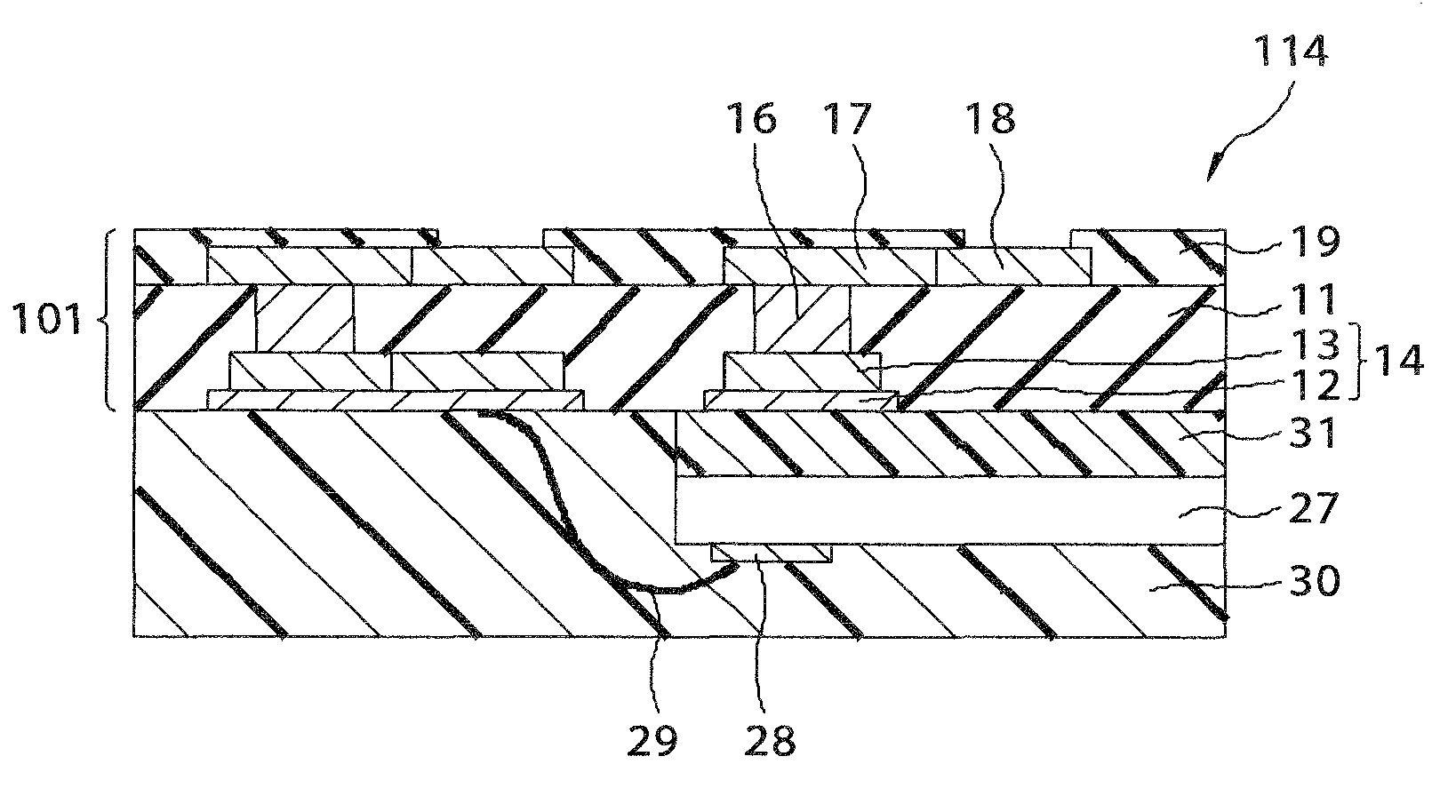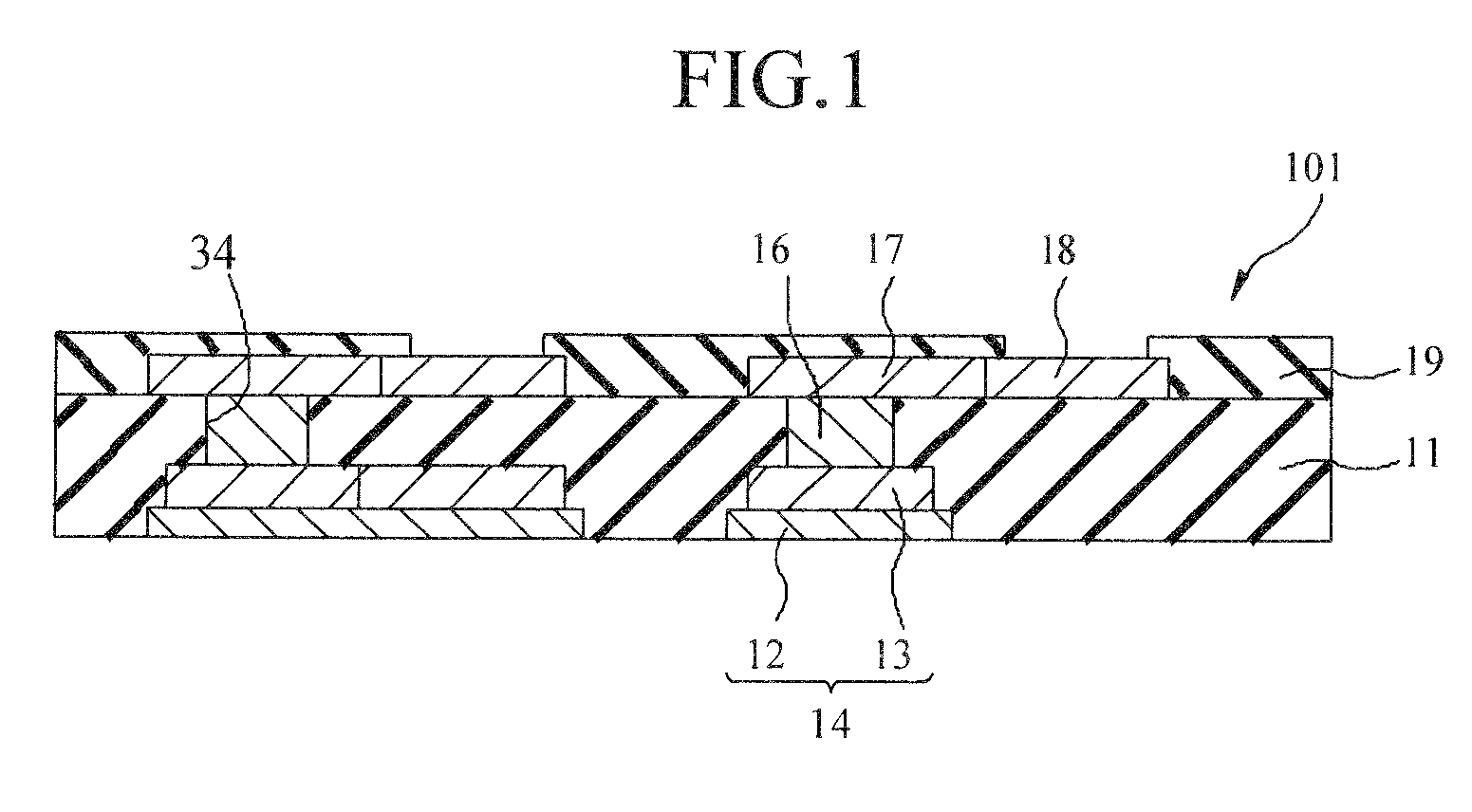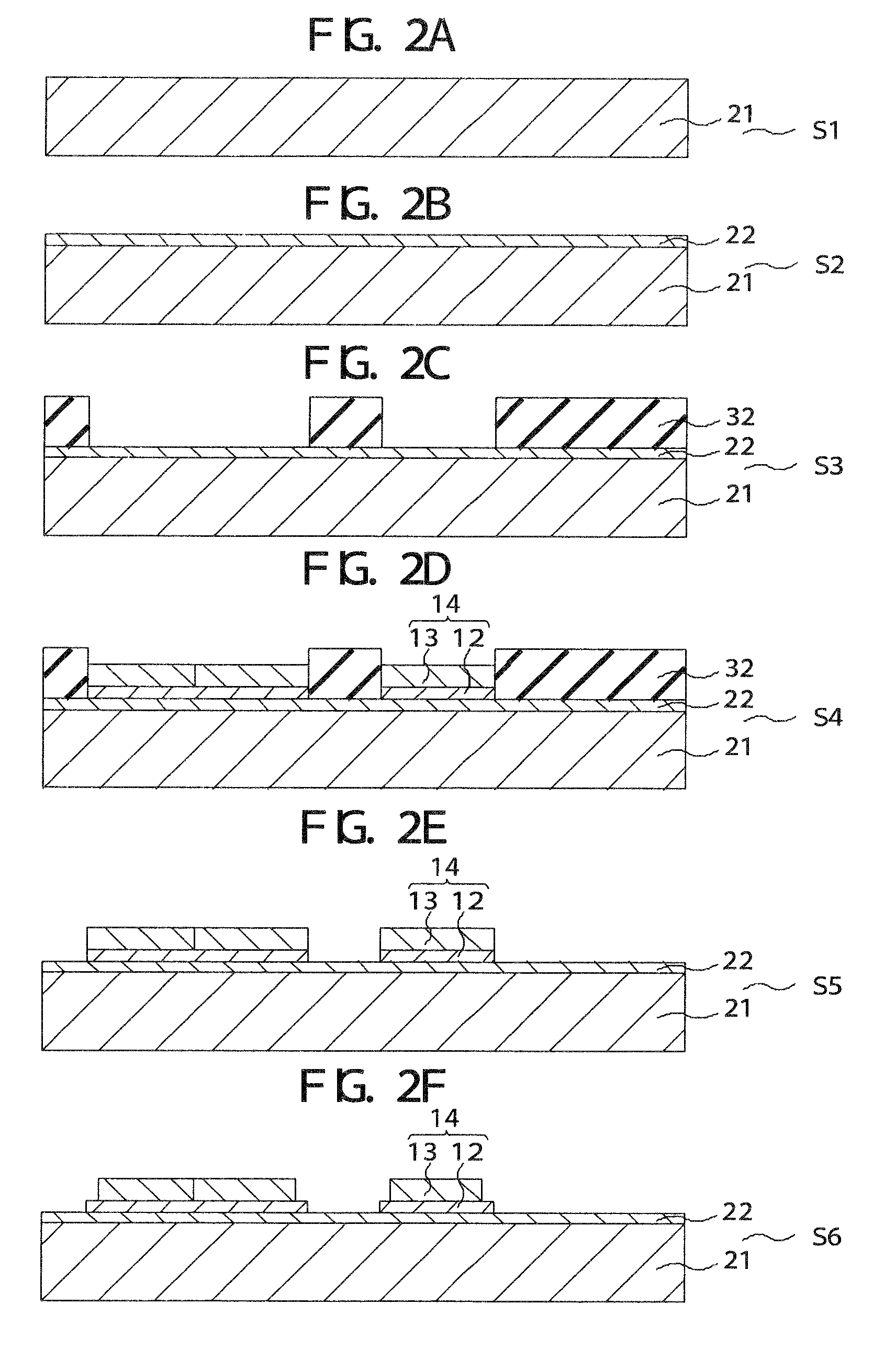Wiring board, semiconductor device using wiring board and their manufacturing methods
a manufacturing method and technology for semiconductor devices, applied in the manufacture of printed circuits, printed circuit aspects, basic electric elements, etc., can solve the problems of unsuitable high-speed signal transmission boards, thin boards cannot meet the current demands for highly dense packaging, and the patterned lines are less accurate, so as to reduce the amount of ultrasonic absorption and reduce the effect of relaxation
- Summary
- Abstract
- Description
- Claims
- Application Information
AI Technical Summary
Benefits of technology
Problems solved by technology
Method used
Image
Examples
first embodiment
[0054]Embodiments of the present invention will be specifically explained below with reference to the attached drawings. To begin with, the present invention will be explained. FIG. 1 is an exemplary cross-sectional view of a wiring board 101 according to the present embodiment. FIGS. 2A through 2F, FIGS. 3A through 3D, and FIGS. 4A through 4C are exemplary cross-sectional views showing an example of the manufacturing method of the wiring board 101 according to the present embodiment step by step. FIGS. 5A through 5H are exemplary cross-sectional views showing another example of the manufacturing method till the step before FIG. 3A step by step. FIGS. 6A through 6F are exemplary cross-sectional views showing yet another example of the manufacturing method till the step before FIG. 3A step by step. FIGS. 7A through 7H are exemplary cross-sectional views showing still another example of the manufacturing method till the step before FIG. 3A step by step.
[0055]As shown in FIG. 1, the wi...
second embodiment
[0132]Next, the present invention will be explained. FIG. 8 is an exemplary cross-sectional view of a wiring board 102 according to the present embodiment. FIGS. 9A through 9E, FIGS. 10A through 10D and FIGS. 11A through 11C are exemplary cross-sectional views showing one example of a manufacturing method of the wiring board 102 according to the present embodiment step by step. FIGS. 12A through 12G are exemplary cross-sectional views showing another example of the manufacturing method till the step before FIG. 11A step by step. In FIG. 8 through FIG. 12, components that are the same as those in FIG. 1 through FIG. 7 will be denoted by the same reference numerals and will not be explained in detail again.
[0133]In the first embodiment described above, the first wiring layer 14 is embedded in the insulating layer 11 with its surface exposed, and the surface of the first wiring layer 14 and the lower surface of the insulating layer 11 are coplanar. The present embodiment differs from t...
third embodiment
[0181]Next, the present invention will be explained. FIG. 13 is an exemplary cross-sectional view of a wiring board 103 according to the present embodiment. FIGS. 14A through 14H are exemplary cross-sectional views showing one example of a manufacturing method of the wiring board 103 according to the present embodiment step by step. In FIG. 13 and FIG. 14, components that are the same as those in FIG. 1 through FIG. 12 will be denoted by the same reference numerals and will not be explained in detail again.
[0182]In the second embodiment described above, the side surfaces of the depression coincide with the edges of the first metal film 13. The present embodiment differs from the second embodiment in that the side surfaces of the depression 15 are located more outward than the edges of the first metal film 12, but is the same as the first embodiment in the other respects.
[0183]As shown in FIG. 13, in the wiring board 103 according to the present embodiment, the first metal film 12 is...
PUM
 Login to view more
Login to view more Abstract
Description
Claims
Application Information
 Login to view more
Login to view more - R&D Engineer
- R&D Manager
- IP Professional
- Industry Leading Data Capabilities
- Powerful AI technology
- Patent DNA Extraction
Browse by: Latest US Patents, China's latest patents, Technical Efficacy Thesaurus, Application Domain, Technology Topic.
© 2024 PatSnap. All rights reserved.Legal|Privacy policy|Modern Slavery Act Transparency Statement|Sitemap



